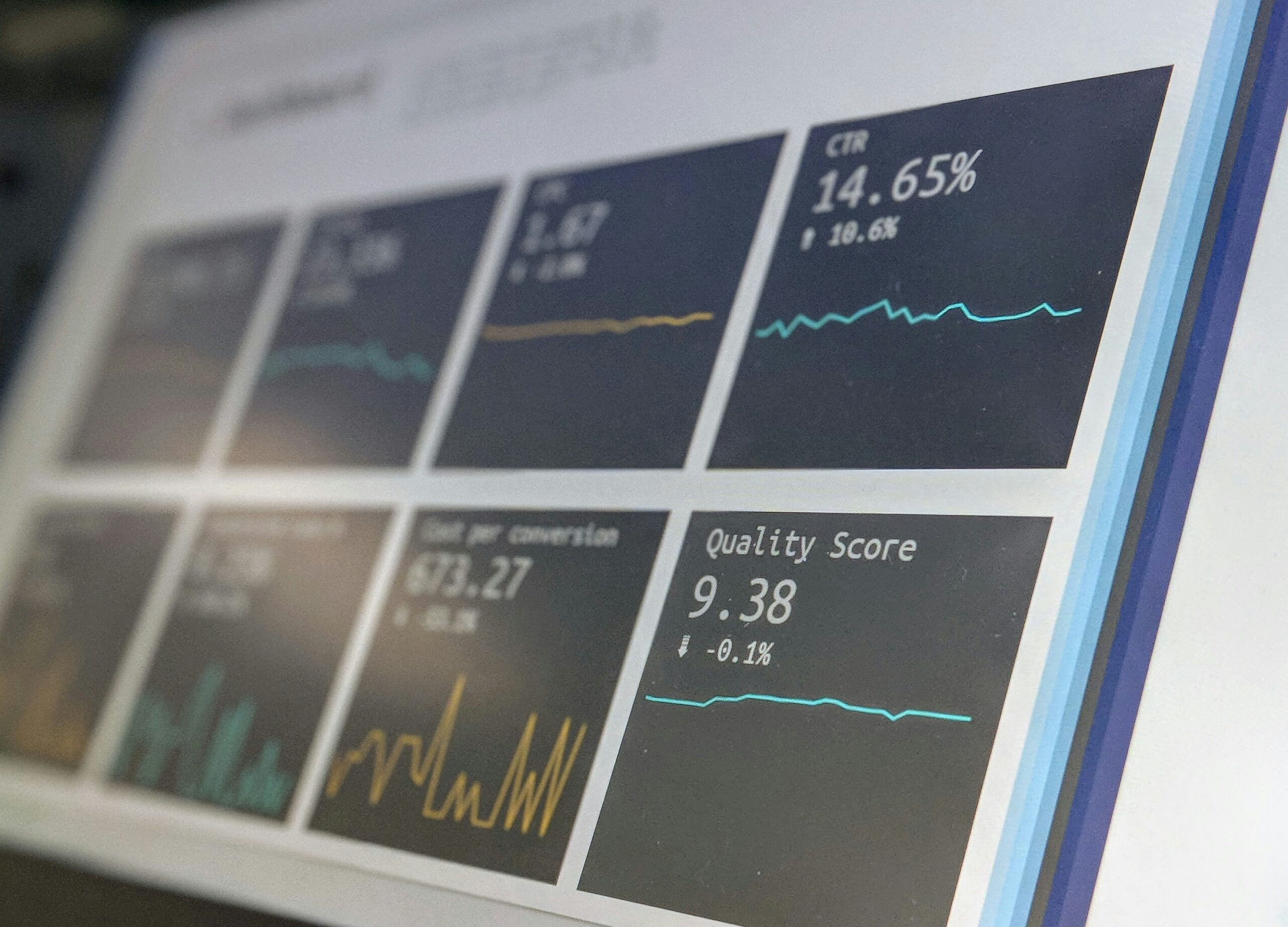Optimizing Talent Acquisition Costs Through Analytics

Understanding Talent Acquisition Costs
Talent acquisition costs encompass a broad spectrum of expenses associated with hiring new employees. These costs can be divided into several categories, each of which plays a crucial role in determining the overall financial implications of recruitment efforts. Understanding these categories is essential for organizations aiming to evaluate and optimize their hiring strategies effectively.
One of the primary components of talent acquisition costs is advertising expenses. This includes the financial outlay for job postings across various platforms, such as job boards, social media, and company websites. In an increasingly digital landscape, investing in online advertisements can significantly enhance visibility to potential candidates, although this can also lead to substantial costs if not managed efficiently.
Another significant category includes recruitment agency fees. Many organizations partner with external agencies to leverage their expertise and resources in sourcing candidates. While this can expedite the hiring process, it often incurs high commission rates based on a percentage of the new employee’s salary. Understanding these fees is critical as they can dramatically impact the overall budget for talent acquisition.
Internal staffing resources also contribute to hiring costs. This involves salaries and benefits for HR personnel dedicated to the recruitment process, along with the associated costs for training and development. Moreover, the investment in technology and software solutions to streamline recruitment efforts, such as Applicant Tracking Systems (ATS), represents another vital aspect of internal costs.
In summary, grasping the entirety of talent acquisition costs—including advertising, agency fees, and internal staffing resources—is essential for organizations. By analyzing these categories, businesses can identify inefficiencies in their hiring practices and make data-driven decisions to optimize their talent acquisition strategies effectively.
The Importance of Cost Per Hire as a Metric
In the landscape of talent acquisition, understanding the cost per hire (CPH) stands as a pivotal metric for organizations striving to optimize their recruitment processes. The CPH quantifies the total expenses incurred during the hiring process, enabling businesses to evaluate the efficiency of their recruitment strategies. The formula for calculating CPH is relatively straightforward: it entails summing up all the costs associated with recruiting—such as advertising expenses, staffing agency fees, and interview costs—and dividing this total by the number of hires made within a specific period.
Organizations can adapt this formula to suit various roles and regions, allowing them to conduct a nuanced analysis of their hiring expenditures. For instance, the cost per hire may differ significantly between entry-level positions and executive roles due to variations in sourcing strategies, time-to-fill, and the complexity of the hiring hierarchy. Furthermore, geographical considerations can influence CPH, as labor market conditions vary widely across regions. By calculating CPH for specific roles and locations, organizations gain valuable insights that can inform their resource allocation and strategic planning.
The significance of monitoring cost per hire extends beyond mere financial accountability; it also serves as a benchmark for recruitment effectiveness. High CPH values can prompt organizations to assess their hiring practices, identifying inefficiencies in their processes. Conversely, a lower CPH may indicate successful talent acquisition strategies. Ultimately, understanding and analyzing CPH is crucial for businesses aiming to make informed hiring decisions. By leveraging this metric, organizations can align their talent acquisition strategies with their overall financial goals, ensuring that they invest wisely in human capital while effectively managing their hiring costs.
Recruitment ROI: Measuring Effectiveness
Recruitment Return on Investment (ROI) is a crucial metric that organizations utilize to gauge the effectiveness and profitability of their recruitment efforts. Understanding this metric allows businesses to make informed decisions about their hiring processes and resource allocations. To calculate recruitment ROI, organizations can employ a straightforward formula that considers the cost of recruitment against the revenue generated from new hires. By defining a specific timeframe, typically within a fiscal year, businesses can effectively track the performance of their recruitment strategies.
To accurately compute recruitment ROI, organizations need to consider all relevant costs associated with the hiring process. This includes advertising fees, agency costs, recruitment software expenses, and the salaries of internal recruiting teams. On the revenue side, it is essential to evaluate the contributions of new hires, factoring in sales figures, productivity gains, or other measurable outputs directly correlated to the roles filled. The formula can be articulated as follows: (Total Revenue from Hires – Total Recruitment Costs) / Total Recruitment Costs. This method provides a clear picture of the return generated for every dollar spent on recruitment.
Analyzing the recruitment ROI is pivotal as it highlights the effectiveness of various strategies employed within the hiring process. A high ROI indicates that an organization’s recruitment approach is yielding favorable results, suggesting that the methods of sourcing and selecting talent are efficient. Conversely, a low ROI might prompt organizations to reevaluate their strategies, potentially leading to investments in better tools, training for hiring managers, or revisions of job descriptions to attract suitable candidates. By continuously monitoring recruitment ROI, businesses can adapt their talent acquisition strategies, ensuring optimal use of resources and maximizing the value retrieved from their investment in human capital.
Cost Per Source: Evaluating Recruitment Channels
Understanding the cost per source metric is integral to optimizing talent acquisition strategies. This metric provides a comprehensive view of the recruitment expenses associated with various channels, including job boards, social media platforms, direct referrals, and internal recruitment initiatives. Each of these channels presents unique cost implications that can significantly influence overall hiring budgets.
Job boards remain a popular choice for many employers, often characterized by their wide reach. However, costs may vary widely depending on the specific board used and the nature of the job listings. Analyzing the expense generated from job boards enables organizations to determine the effectiveness of their advertising spend and whether it yields quality candidates. Conversely, social media platforms offer a more cost-effective option in many cases, allowing companies to engage potential candidates through organic outreach and targeted ads. Evaluating recruitment costs through social media, in terms of both time and money, can reveal valuable insights into its efficiency as a sourcing channel.
Another recruitment channel worth considering is employee referrals, which can often be one of the most economical methods for sourcing talent. Referrals usually result in lower costs per hire and quicker onboarding processes due to the pre-existing familiarity with company culture among referred candidates. By examining the costs associated with referrals, organizations can optimize their referral programs to further enhance this advantageous channel.
Ultimately, analyzing the costs per source across various recruitment channels equips HR professionals and hiring managers with the necessary insights to allocate their resources judiciously. By identifying which channels yield the highest return on investment, organizations can streamline their talent acquisition processes, minimize unnecessary expenditures, and enhance their overall recruiting efficiency.
Case Studies: Organizations That Reduced Hiring Costs
Numerous organizations have successfully leveraged analytics to reduce their talent acquisition costs. One notable example is a large retail chain that faced escalating recruitment expenses due to high turnover rates. By implementing a comprehensive analytics strategy, the company scrutinized its recruitment channels, tracking metrics such as the cost-per-hire, time-to-fill positions, and candidate quality. This data-driven approach enabled the organization to identify underperforming recruitment sources, leading to the reallocation of resources to more effective platforms. As a result, the retail chain not only reduced its hiring costs by 25% but also improved employee retention by focusing on candidate fit and engagement.
Another illustration comes from a technology firm that struggled with lengthy recruitment processes and inflated costs. By employing predictive analytics, the organization analyzed historical hiring data to determine the traits of high-performing employees. They developed a tailored recruitment strategy that targeted specific candidate profiles and utilized assessments to streamline the selection process. Key metrics, such as quality-of-hire and candidate satisfaction, were monitored consistently. Over the course of a year, this organization managed to decrease its hiring costs by 30%, while simultaneously boosting workforce productivity and satisfaction.
A third example is a healthcare provider that recognized inefficiencies in its referral recruitment strategy. By utilizing data analytics and benchmarking against industry standards, the organization identified critical areas for improvement. They established a balanced scorecard approach to evaluate the effectiveness of various recruiting channels, leading to the optimization of their referral programs. This analytical intervention successfully cut hiring costs by 20%, while ensuring they hired qualified medical professionals in a timely manner.
These case studies highlight the importance of a data-driven approach in talent acquisition. Employing analytics empowers organizations to make informed decisions, leading to reduced hiring costs and enhanced recruitment outcomes.
The Role of Analytics in Talent Acquisition
In today’s competitive job market, the role of analytics in talent acquisition has become increasingly vital for organizations seeking to enhance their recruitment strategies. By leveraging data-driven insights, companies can effectively identify trends in candidate behavior, forecast hiring needs, and streamline their recruitment processes, ultimately optimizing talent acquisition costs.
One of the primary benefits of analytics in this domain is its ability to pinpoint patterns that inform recruitment strategies. For instance, analyzing historical data can help organizations understand which job boards yield the highest quality candidates, as well as identify the demographic trends of successful hires. This empowers recruiters to allocate resources more effectively, ensuring that investments in talent acquisition are directed toward channels that produce the best results.
In addition to improving targeted sourcing, analytics also plays a critical role in forecasting future talent needs. Employing predictive analytics can enable HR departments to anticipate workforce demands based on various factors such as market trends, business growth projections, and turnover rates. By understanding these dynamics, organizations can proactively develop talent pipelines, reducing the urgency often associated with last-minute hiring decisions, which can be costly.
Furthermore, analytics enhances the overall efficiency of the recruitment process. By utilizing data-driven metrics, such as the time-to-fill and cost-per-hire, organizations can assess the effectiveness of their current hiring strategies. This insight allows for continuous improvement, enabling companies to implement best practices that minimize talent acquisition expenses while maintaining a high standard of quality in new hires.
In essence, the integration of analytics into talent acquisition not only fosters informed decision-making but also equips organizations with the tools necessary to optimize their recruiting efforts. As the landscape of recruitment evolves, those who embrace analytics will be better positioned to make strategic choices that curtail costs and bolster their talent acquisition initiatives.
Leveraging HRMS Tools for Cost Optimization
In the ever-evolving landscape of human resources, organizations are increasingly turning to Human Resource Management Systems (HRMS) as a means to streamline processes and optimize costs. A selection of robust HRMS tools, including Draup, 247HRM, and HireGain, offers valuable features that assist organizations in tracking and analyzing recruitment metrics effectively.
Draup, for example, is designed to facilitate strategic hiring by harnessing data-driven insights. This platform provides talent intelligence that allows recruiters to understand the marketplace, evaluate candidate potential, and identify skill gaps within the organization. By leveraging this information, companies can make informed decisions that lead to cost savings by reducing time-to-hire and minimizing turnover rates.
Another commendable HRMS tool is 247HRM, which claims to simplify recruitment processes while offering a comprehensive suite for applicant tracking, payroll processing, and performance management. With its feature set dedicated to streamlining onboarding procedures and enhancing employee engagement, organizations can keep costs in check while maximizing workforce productivity. Integration capabilities with existing systems ensure that data is maintained cohesively, enabling effective tracking and analytics of recruitment performance indicators.
HireGain further enriches the suite of HRMS tools by offering features focused on collaboration and communication among hiring stakeholders. This platform enables organizations to gather feedback throughout the recruitment process, providing insights that can help refine future hiring strategies. By analyzing these insights alongside current metrics, companies can identify patterns and trends that contribute to more effective resource allocation.
To explore these HRMS tools and discover how they can best support your organization in achieving cost optimization, please visit their respective websites: Draup, 247HRM, and HireGain. Each platform presents unique offerings that can enhance the recruitment function and help organizations keep acquisition costs manageable.
Best Practices for Conducting Cost Analysis in Recruitment
Conducting a cost analysis in recruitment is vital for organizations aiming to optimize talent acquisition costs. To initiate this process, it is essential to gather relevant data systematically. Start by identifying all associated costs, such as advertising expenses, recruitment agency fees, administrative costs, and any potential onboarding expenses. Consolidating these figures creates a clear picture of the financial commitment involved in each hiring initiative.
Once data is collected, the next step is to interpret the results. This involves analyzing the cost of hire, which measures the total expenses incurred from identifying a candidate to bringing them on board. By calculating the cost per hire, organizations can benchmark their recruitment efficiency against industry standards. Additionally, evaluating metrics such as time to fill and turnover rates can provide insights into the effectiveness of the current recruiting strategy. If the cost per hire appears disproportionately high, a deeper investigation may reveal inefficiencies in the recruitment process.
Implementing changes based on insights gained from analysis is crucial for sustainable improvement. For instance, if the data indicates that certain sourcing channels yield better candidates at lower costs, organizations should shift focus and allocate resources accordingly. Furthermore, regularly monitoring these metrics allows for continuous optimization of the talent acquisition strategy. It is advisable to establish key performance indicators (KPIs) that align with corporate objectives, as this fosters accountability and ensures that recruiting efforts are consistently evaluated against strategic goals.
In summary, by following sound data-gathering techniques, accurately interpreting results, and proactively implementing changes, organizations can achieve a more cost-effective recruitment process. This not only enhances the bottom line but also contributes to the overall talent management framework.
Future Trends in Talent Acquisition Cost Management
As organizations navigate the complexities of talent acquisition, several emerging trends are poised to shape the future of cost management in recruitment. One notable trend is the increasing utilization of artificial intelligence (AI) and machine learning technologies in the hiring process. These advancements enable companies to streamline candidate sourcing, improve quality of hire, and ultimately reduce time-to-fill metrics. In adopting these technologies, organizations can minimize costs associated with prolonged vacancies and inefficient processes, making talent acquisition more effective.
Another significant shift is the evolution of the labor market, influenced by demographic changes and shifts in employee expectations. The rise of remote work and flexible job offerings has enabled companies to access a broader talent pool while keeping costs manageable. However, organizations must be vigilant about the associated expenses related to onboarding, training, and supporting a geographically dispersed workforce. Cost management strategies must adapt to these changing landscape dynamics to optimize spending and maintain competitiveness.
The growing emphasis on diversity and inclusion initiatives in recruitment cannot be overlooked as well. As organizations strive to create diverse and inclusive workplaces, they must also be mindful of the costs involved in implementing these programs. While efforts to diversify talent acquisition can lead to increased costs in the short term, such initiatives can yield long-term benefits by fostering innovation and improving employee retention rates. It is crucial for organizations to strike a balance between investing in diversity efforts and managing recruitment budgets effectively.
To stay ahead of the curve, organizations should continuously evaluate and refine their talent acquisition strategies. This involves leveraging data analytics to assess the effectiveness of different recruitment channels and identifying what works best for their unique needs. By monitoring key performance indicators, organizations can better allocate resources, enhance cost management, and ultimately create a more efficient and effective talent acquisition process.






Responses